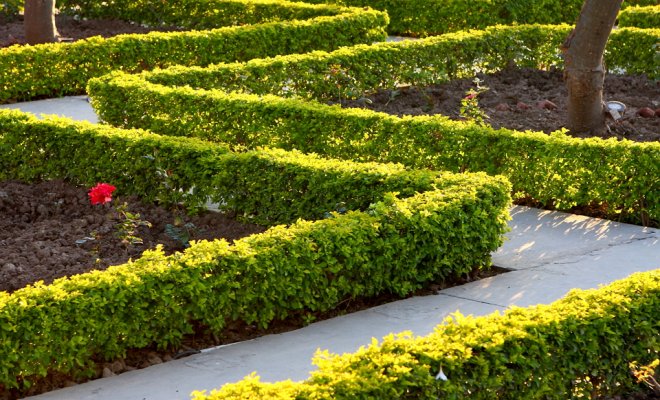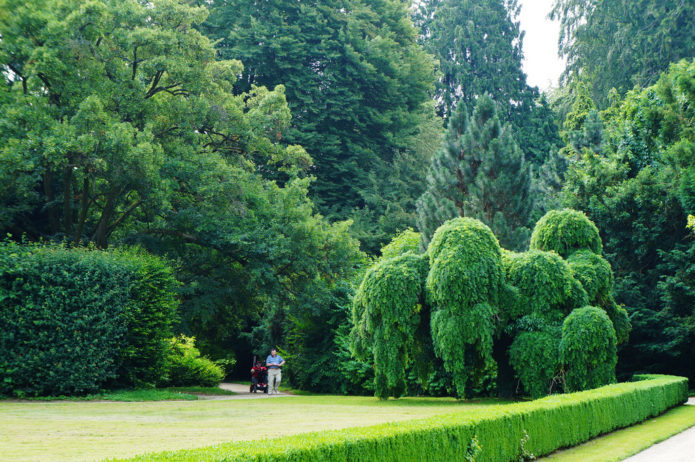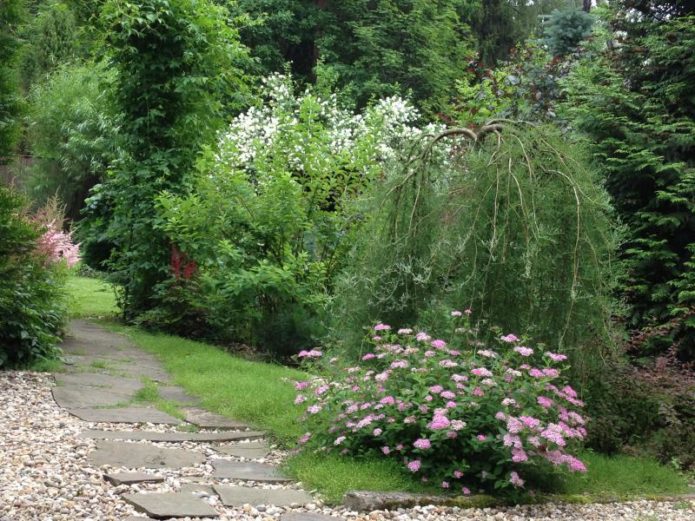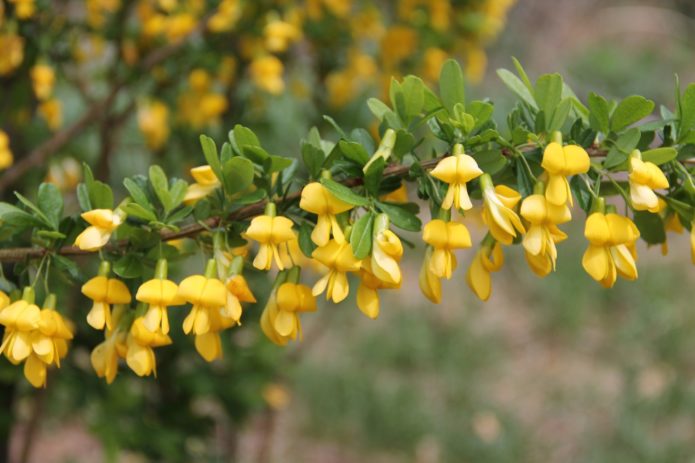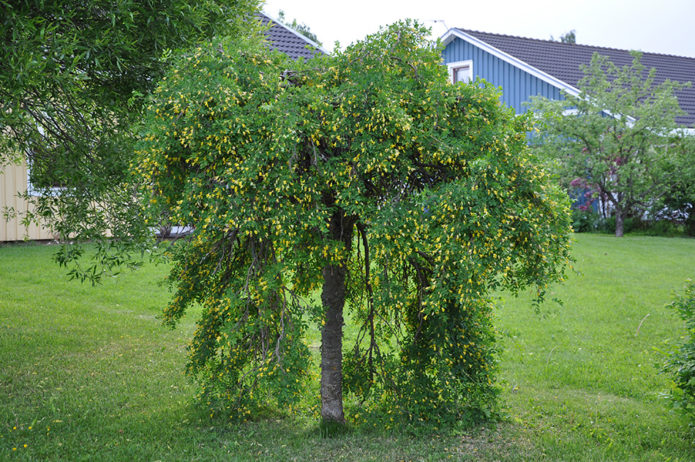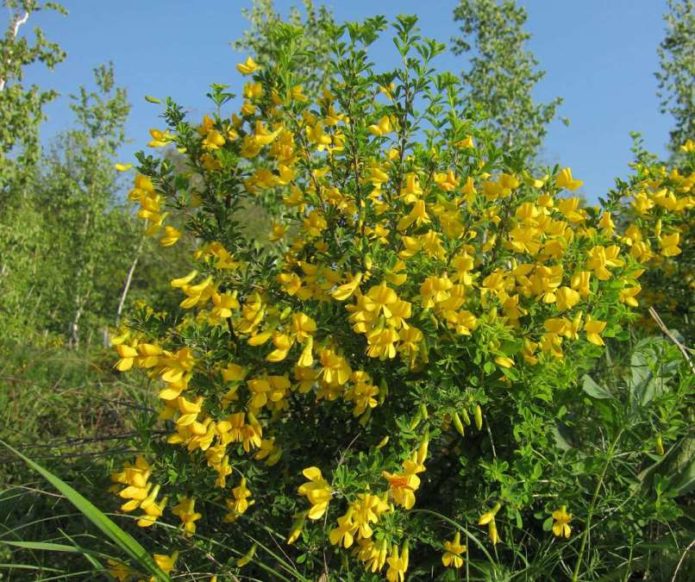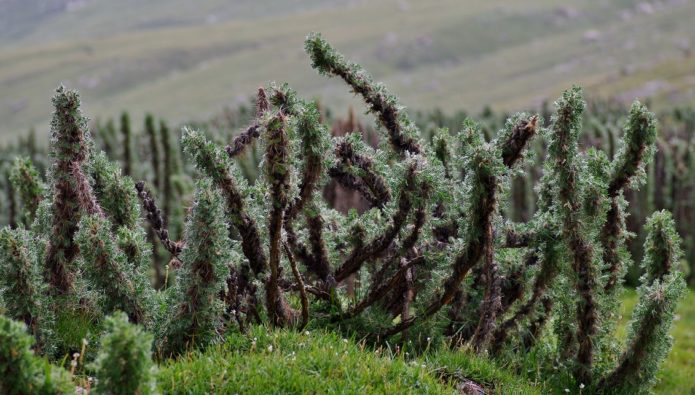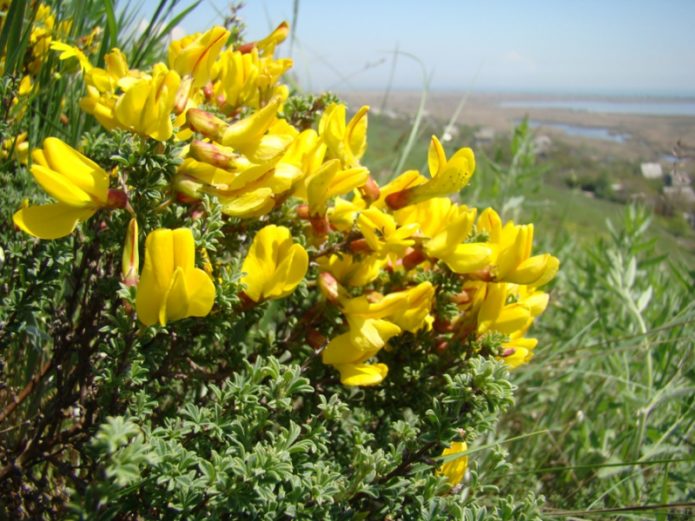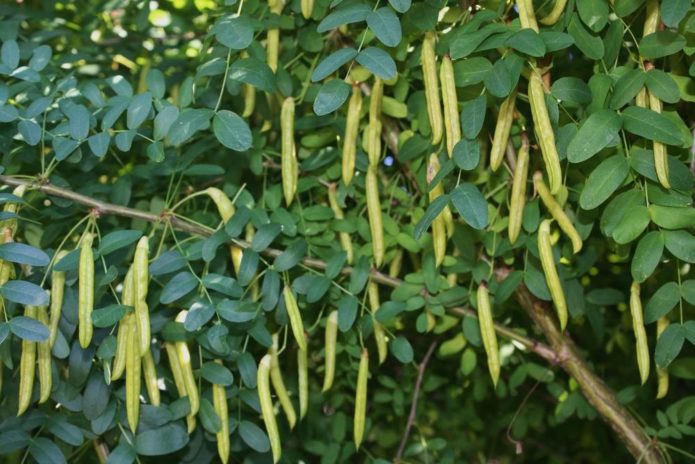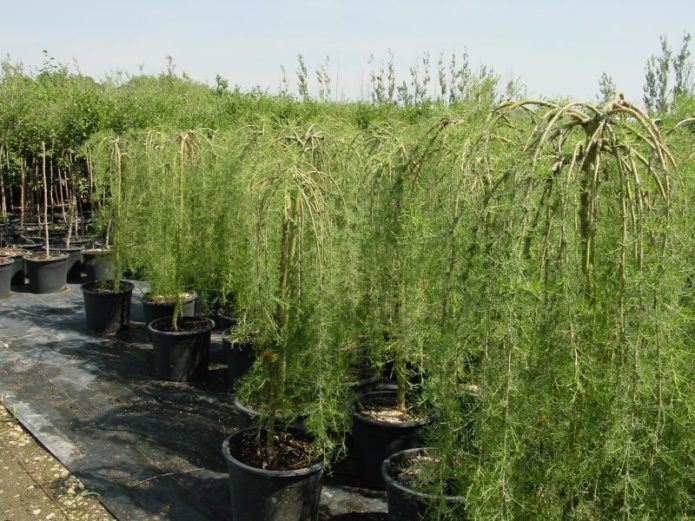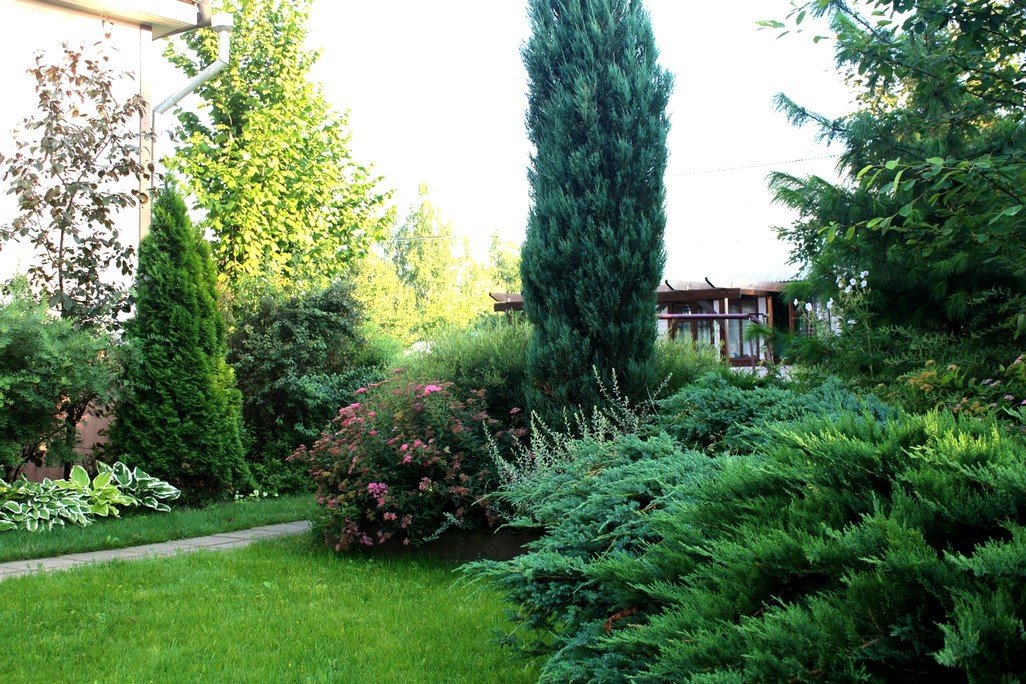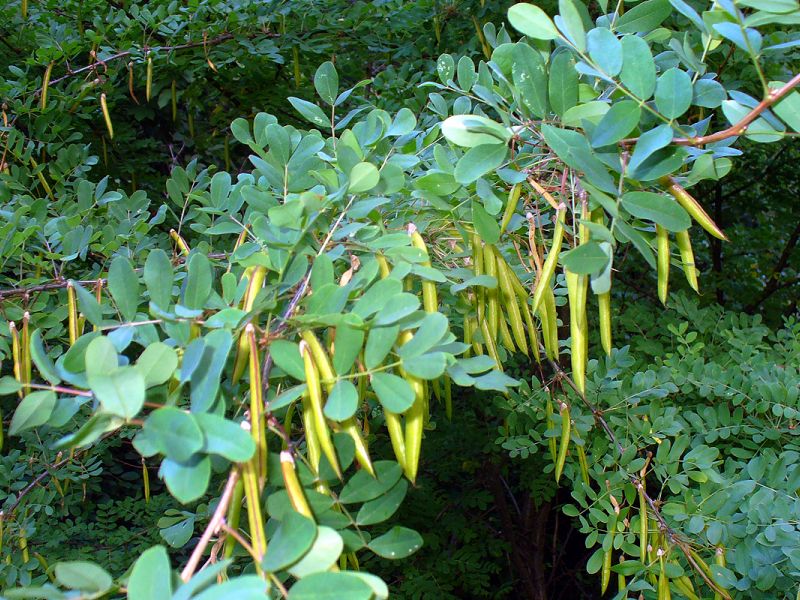In many city squares, on personal plots and in their surroundings, a small tree or bush is growing, covered with tiny yellow flowers and leaves of an unusual shape. It is called acacia, but few know that the real name of the shrub is caragana.
Plant features
Caragana is a frost and drought resistant plant. It grows actively in Siberia, Central Asia, the Caucasus, the Far East and the Southern Urals. It takes root well in the gassed central regions, but still feels better on forest edges and the banks of fresh rivers.
The tree can grow 6-7 m in height, but in Russia it grows up to a maximum of 3 m. Yellow flowers appear in early summer, the flowering season lasts about 40-50 days. Then the fruits are formed - small peas hidden in a pod.
It was from the pods of caragana that many made improvised whistles in childhood.
Use in landscape design
A neat, fast-growing bush is highly prized in landscape design. As a rule, hedges are created from caragana. Compositions of several varieties of plants look beautiful, for example, Ussuri, tree and Pendula. Shrubs also have a functional value - they are used to preserve crumbling slopes.
Usually, the caragana is planted in garden plots, less often in tubs to decorate terraces. In the first case, good drainage must be provided, since the tree does not like too wet soil.
Medicinal properties and contraindications
Caragana seeds are similar to peas not only in appearance, but also in taste. And decoctions of flowers and bark of shrubs have medicinal properties. So, flowers are used:
- for colds as an antipyretic, expectorant and anti-inflammatory agent;
- with pain in the stomach and intestinal disorders;
- for the treatment of skin diseases and acne;
- with stomatitis;
- for wound healing.
Despite the indisputable benefits, caragana can also bring severe harm. The plant contains poisonous alkaloids that accumulate in the fruit during flowering. Eating a large amount of caragana beans can lead to poisoning and even death. Preparations from plant parts are contraindicated in children, patients with hypervitaminosis, pregnant and lactating women.
The honey collected from the caragana is also considered curative.
Popular varieties of kargan
There are many varieties of the plant, but among them there are several of the most popular.
Caragana tree
The most common type of shrub, which is popularly called yellow acacia. The plant has single flowers, foliage during the season changes shade from emerald to pale green. The pods are brown, narrow and elongated.
Pendula (weeping acacia)
It has an unusual crown, branches from which hang down to the very ground. Flowers are large, yellow, collected in a bunch. Bloom after all the foliage has blossomed.
Caragana shrub
Shrub 1.5–2 m high. It has an original yellowish bark, which is covered with narrow stripes. The fruits appear in July.
Under favorable conditions, shrub caragana forms dense thickets, for which it is appreciated by gardeners.
Caragana dwarf
It is a small bushes no more than 1 m high. The bark is golden and smooth, the flowers are yellow and do not fade all summer.
Caragana prickly
An unusual subspecies with thorny shoots and very small leaves, the ends of which are decorated with small thorns. It blooms in large buds up to 2 cm in diameter, the shrub grows to a height of 1–1.5 m.
Caragana maned
It has thick branches covered with large thorns. Leaves are compound, double on the back, color varies from emerald to light green. The flowers are pink or white, the calyx is densely covered with hairs inside.
Karagana Scythian
A plant from the Red Book, has thin trunks and weak thorns. The adult shrub is very small - no higher than 40 cm in height. The buds are bright yellow, turn red towards the end of flowering.
Caragana planting methods
The shrub grows well from seeds, cuttings and root children. Gardeners rarely choose cuttings, since cuttings take root only in 30% of cases. You can significantly simplify the task of a purchased seedling: in gardening they are sold already grafted and ready for planting.
Seed reproduction
Plants are sown without seedlings directly into open ground. The procedure is carried out in early spring. Autumn sowing is also possible, but in this case the sprouts may not hatch. The planting process consists of 4 stages:
- Choose a place. Caragana can grow on any soil, but it develops most actively in loose soil with a high concentration of sand. The plant loves open sunlight. If there is no choice, it can grow in partial shade.
- Prepare the seeds. Ripe beans are visited for a day in a container with water, after which they are dried.
- Proceed to planting. A 4–5 cm depression is made in the dug ground, where a pea is placed.
- Mulch crops. For this, peat or sawdust is used.
The first shoots appear in a month, then grow very slowly. The shrub will grow up to 1.5 meters in height only after 3 years, by the age of five it will begin to bloom.
Layers and cuttings
When choosing these methods of reproduction, the plant will develop faster - after a year with good care, it can stretch a meter in height.
If you plan to use root cuttings, the procedure is carried out in the fall after the mother plant has shed its leaves. For reproduction, the lower branches are bent and buried in the ground. The first time the layers need to be watered abundantly. As a rule, the roots appear only in spring, therefore, with the first warming, the young Karagana can be separated and replanted.
If you decide to propagate the plant with cuttings, you can prepare them during the spring crown trimming process. You need to cut off healthy branches and place their lower edge in water with the addition of Kornevin or another stimulant. Rooting occurs after about a month, then the cutting can be planted in a permanent place.
Peculiarities of Karagana care: table
The shrub is not capricious in character. To care for the pea, standard measures are sufficient - watering, feeding and trimming.
| Care stages | Features: |
| Watering | After planting, the ground around the caragana is watered abundantly, then the procedure is carried out no more than 3 times a week. Watering more often can rot the roots and cause the plant to die. After each watering, the soil needs to be loosened to fill it with oxygen. |
| Top dressing | Bushes need feeding only in the first months after planting (from May to August). Once every two weeks, a solution of chicken or cow manure (1 part to 50 parts of water) is added under the root. The roots of mature plants produce nitrogen themselves, so they don't need fertilizer. |
| Crown formation | Like any other ornamental shrub, Karagana needs crown formation. Every year new shoots should be cut at least in half, and for old shrubs they use stump rejuvenation. In this case, all branches are completely cut to hemp height of 10 cm. The procedure perfectly stimulates the growth of new shoots. |
| Solution of problems | The plant is highly susceptible to fungal diseases.The most common are rust, powdery mildew, white rot. To exterminate the disease, it is necessary to completely cut off the affected part of the shrub, and then, for prevention, treat all healthy places with Bordeaux liquid. Periodically, the plant is attacked by pests - false scale insects, acacia aphids, leaf flies. They can be easily removed with commercial insecticides. |
| Preparing for winter | Usually, shrubs tolerate frosty winters well, but for reassurance, young plants at the age of 2-3 years should be protected from the cold. To do this, the trunk is wrapped in burlap, and the ground around it is carefully mulched. |
Any caragana, regardless of the variety, is an amazing and beautiful shrub. It attracts gardeners with its versatility: the plant makes excellent hedges, charming garden compositions and useful medicinal teas.

